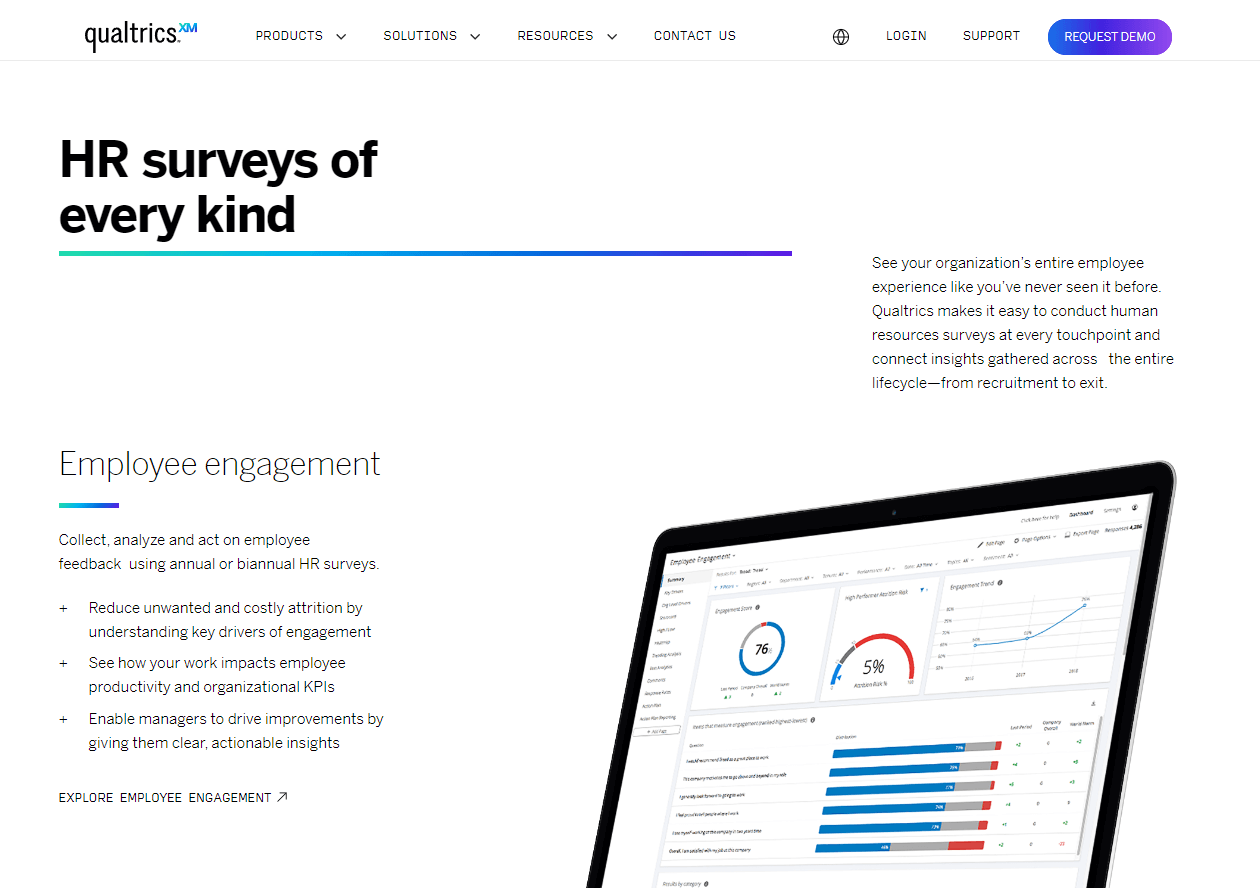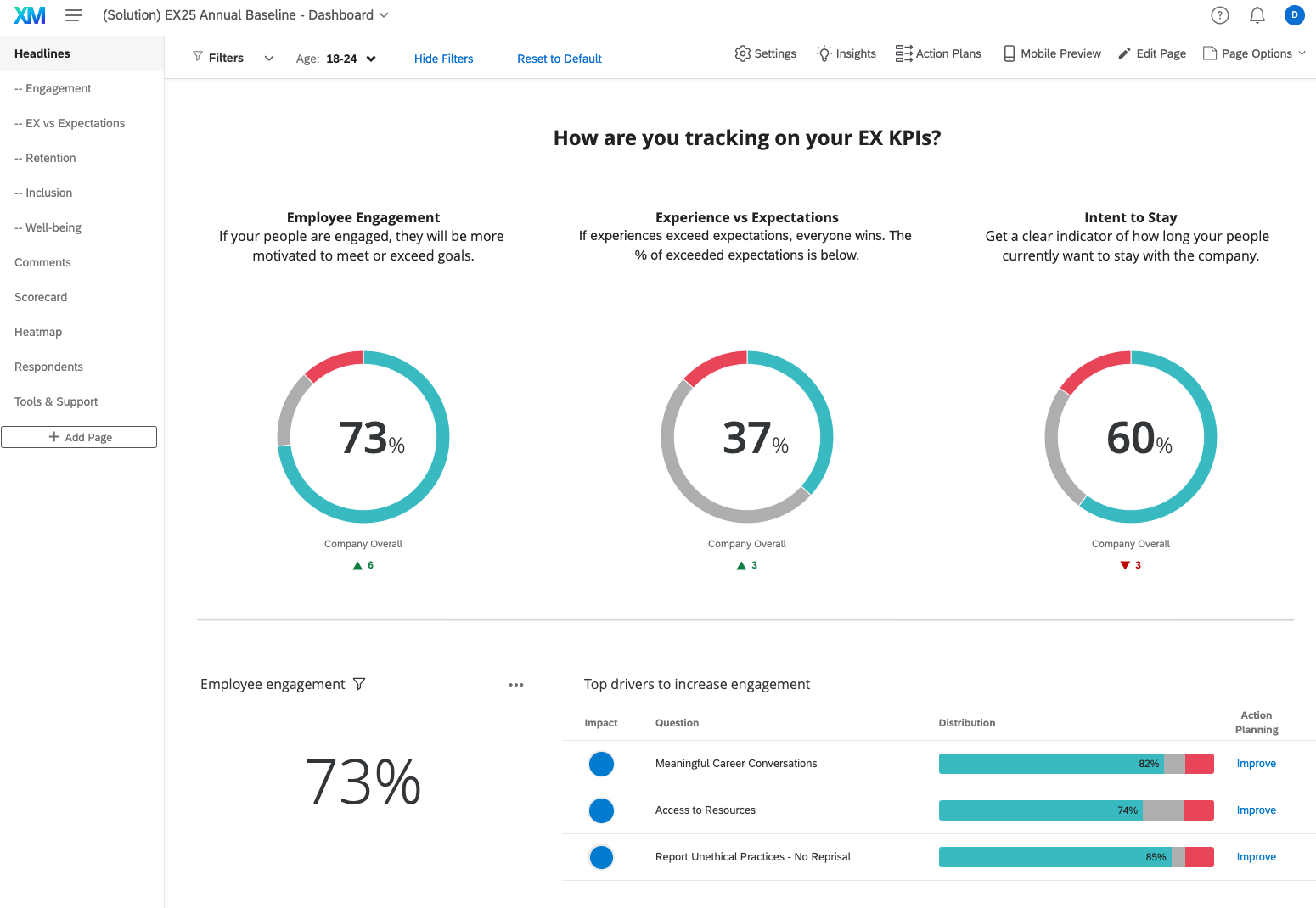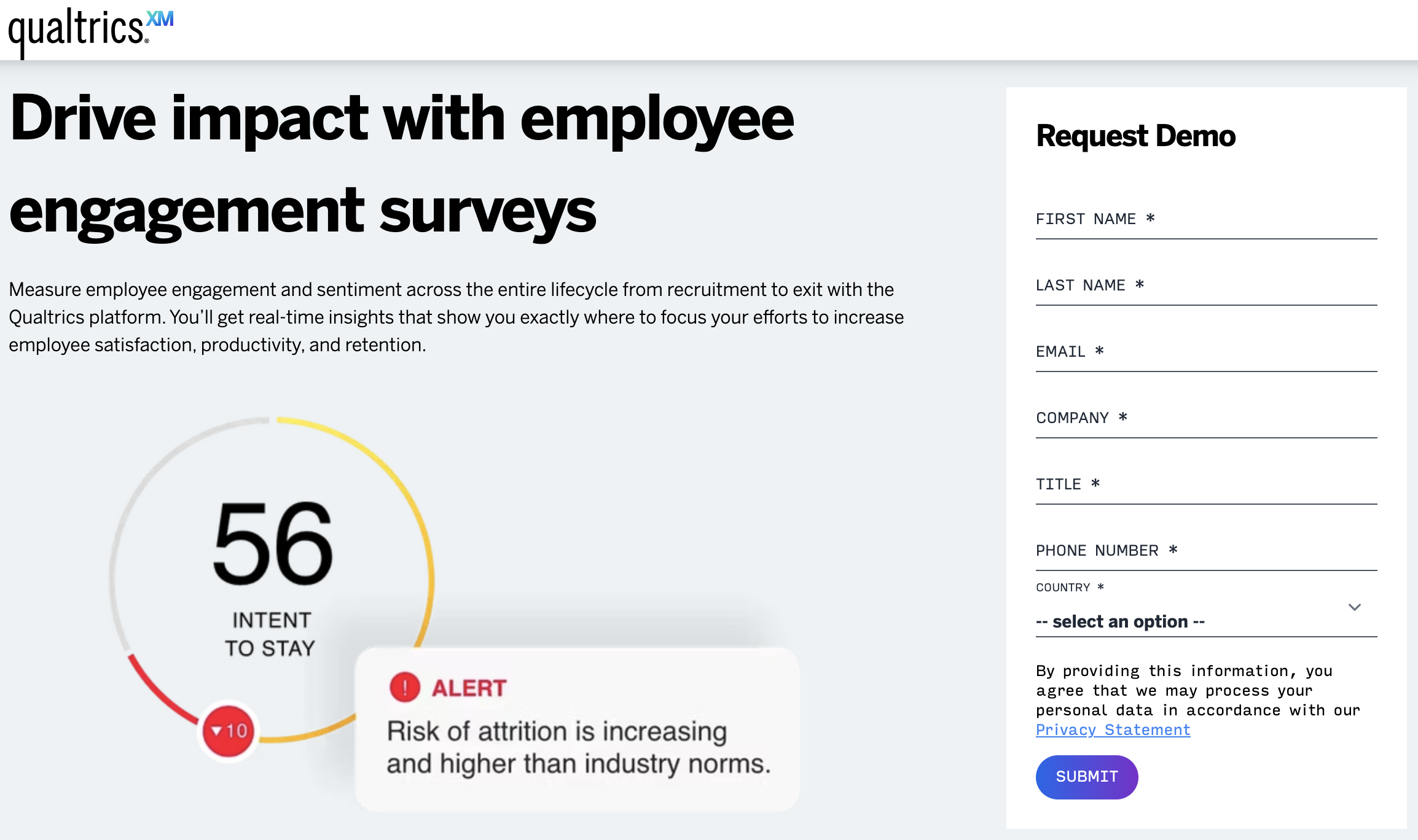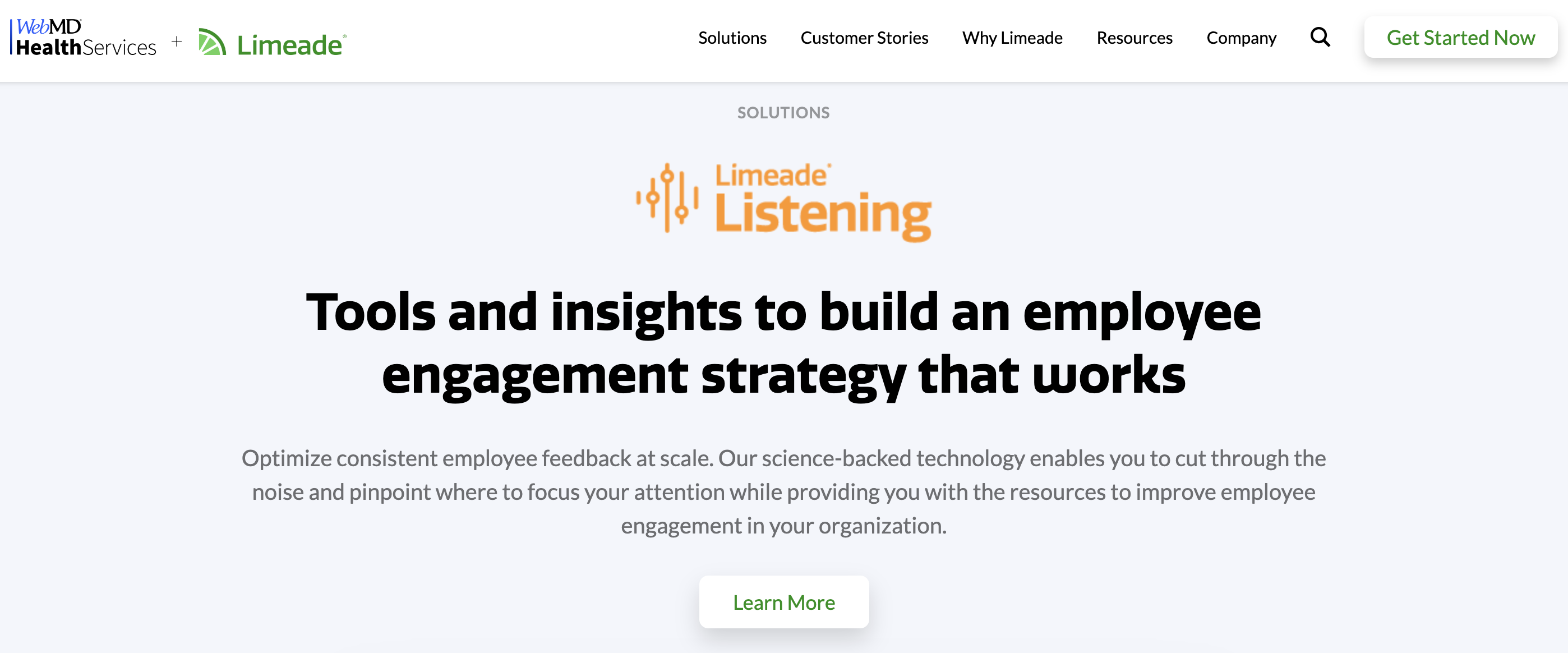Surveying Success: Streamlined Software for Employee Engagement
Employee engagement plays a significant role in the success of any organization. When employees are actively engaged, they feel motivated to reach their potential, resulting in increased productivity and overall performance.
Traditionally, companies have relied on employee engagement surveys to gather feedback about aspects of the work environment. However, with advancements in technology, businesses now have access to software that revolutionizes how they conduct these surveys.
Click on each corresponding link to learn more:
- Understanding the Importance of Employee Engagement Surveys
- Keys to Increasing Employee Engagement
- Recommended Steps to Increase Employee Engagement
- Embracing Efficient Employee Survey Software
- Advantages of Streamlined Software
- Tips for Smooth Implementation
- Conclusion
If you require assistance with distributing your survey or building a survey, contact us at Profitworks.
1. Understanding the Importance of Employee Engagement Surveys

Source: qualtrics
Before diving into the details of streamlined employee engagement survey software, it's important to recognize why these surveys hold significance. They enable organizations to assess the satisfaction and motivation levels of their workforce. Employee engagement surveys serve purposes by evaluating factors such as:
- Job satisfaction
- Workplace culture
- Organizational communication
- Recognition programs
- Career development opportunities within a company
Firstly, these surveys help identify areas that require improvement within an organization. By collecting data through crafted survey questions that target concerns or areas open for enhancement (such as communication channels), companies can pinpoint aspects that negatively impact employee morale.
Secondly, these surveys provide insights that contribute to decision-making processes. Company leaders have the opportunity to spot trends and patterns in how their employees respond, leading to actions aimed at improving employee satisfaction and fostering long-term retention rates.
2. Keys to Increasing Employee Engagement

Source: qualitrics
Increasing employee engagement when distributing a survey involves careful planning and thoughtful execution. Here are some key strategies to enhance employee engagement in surveys:
A) Communicate Purpose and Benefits:
- Communicate the purpose of the survey and how employees' feedback will be used to improve work conditions, processes, or organizational culture.
- Highlight the potential benefits of participating, such as positive changes, increased job satisfaction, or improved workplace conditions.
B) Ensure Anonymity and Confidentiality:
- Assure employees that their responses will remain confidential and anonymous. This encourages honest and open feedback without fear of reprisal.
C) Choose the Right Timing:
- Select a time to distribute the survey when employees are not overwhelmed with work or stress. Avoid busy periods or critical project deadlines.
D) Use a User-Friendly Survey Platform:
- Ensure that the survey platform is user-friendly, accessible, and compatible with various devices. This helps in increasing the response rate.
E) Short and Relevant Surveys:
- Keep the survey concise and focused on relevant topics. Long surveys can lead to survey fatigue, resulting in incomplete or rushed responses.
F) Highlight Survey Importance:
- Emphasize the importance of each employee's input and how it contributes to the overall success and improvement of the organization.
G) Incorporate Various Response Formats:
- Use a variety of question types, including multiple-choice, open-ended, and scaled questions. This makes the survey more engaging and caters to different communication preferences.
H) Offer Incentives:
- Consider providing incentives, such as small rewards or recognition, to encourage participation. This can motivate employees to take the survey seriously.
I) Provide Feedback on Results:
- Communicate transparently about the survey results and how the feedback will be used. This demonstrates that the organization values employee input and is committed to making positive changes.
J) Follow-Up Communications:
- Send follow-up communications to remind employees about the survey and its importance. Provide regular updates on the progress and outcomes resulting from the survey.
K) Leadership Endorsement:
- Obtain leadership support and endorsement for the survey. When employees see that leadership values their opinions, they are more likely to participate actively.
L) Customize for Different Departments/Teams:
- Tailor survey questions or themes to be relevant to different departments or teams within the organization. This ensures that employees feel the survey is specifically addressing their concerns.
Remember that engagement is an ongoing process. Regularly assess and adjust your survey strategies based on employee feedback and participation rates to continuously improve the survey process and overall employee engagement.
3. Recommended Steps to Increase Employee Engagement
To effectively increase employee engagement when distributing a survey, consider the following recommended steps:
A) Preparation and Planning:
- Clearly define the objectives of the survey and what information you aim to gather.
- Plan the survey timeline, ensuring that it aligns with the organization's schedule and important events.
B) Leadership Support and Communication:
- Obtain support from organizational leaders and communicate their endorsement of the survey.
- Leaders should convey the importance of employee feedback and emphasize how it contributes to positive change.
C) Customize Survey Content:
- Tailor survey questions to address specific concerns or interests within different departments or teams.
- Ensure that the survey is relevant to employees at all levels of the organization.
D) Choose an Accessible Survey Platform:
- Select a user-friendly survey platform that is compatible with various devices (desktops, tablets, and smartphones).
- Test the survey platform to identify and address any potential technical issues before distributing the survey.
E) Anonymity and Confidentiality Assurance:
- Communicate that survey responses are confidential and anonymous, promoting honest and open feedback.
- Explain the measures in place to safeguard employees' privacy.
F) Incentives and Recognition:
- Consider offering incentives for survey participation, such as gift cards, extra time off, or a chance to win a prize.
- Recognize and appreciate employees who actively participate in the survey to motivate others.
G) Segmented Communication:
- Segment your communication strategy based on employee groups or departments.
- Tailor messages to highlight specific aspects of the survey that are relevant to each group.
H) Multi-Channel Communication:
- Use various communication channels to reach employees, including email, intranet, company newsletters, and even posters or flyers in common areas.
- Repeat key messages through different channels to maximize visibility.
I) Launch with Enthusiasm:
- Build anticipation for the survey by creating a sense of excitement and enthusiasm.
- Use kickoff events, video messages, or other creative approaches to launch the survey with a positive tone.
J) Clear Instructions and FAQs:
- Provide clear instructions on how to access and complete the survey.
- Include a frequently asked questions (FAQ) section to address common queries and concerns.
K) Follow-Up Reminders:
- Send periodic reminders to employees about the survey deadline.
- Include updates on the response rate to create a sense of collective participation.
L) Feedback and Action Planning:
- Communicate the survey results to employees promptly.
- Outline the actions or changes that will be implemented as a result of the feedback, demonstrating that their input is valued.
M) Continuous Improvement:
- Solicit feedback on the survey process itself to identify areas for improvement.
- Use insights from the survey to inform ongoing initiatives aimed at enhancing employee engagement.
N) Celebrate Success:
- Celebrate the successful completion of the survey and the positive impact it will have on the organization.
- Acknowledge the collective effort of employees in contributing to the survey's success.
Remember that employee engagement is a continuous process. Regularly assess and adjust your survey strategy based on feedback and evolving organizational needs.
4. Embracing Efficient Employee Survey Software

Source: qualtrics
In recent times, businesses have been moving away from paper-based or online survey tools and embracing streamlined employee engagement software solutions that are more efficient and user-friendly.
Streamlined software is designed to be easy to use while still offering features for data collection and analysis. These platforms provide user interfaces and intuitive survey builders, eliminating the need for technical expertise to run employee engagement campaigns.
This software often comes with intuitive survey builders, allowing administrators to create engaging and dynamic surveys without the need for extensive technical expertise. This empowers HR professionals and other survey administrators to design surveys that are more targeted and effective.
The move towards employee engagement software reflects a shift in the business landscape toward more:
- Efficient
- User-friendly
- Technologically advanced solutions
These platforms are tailored to meet the dynamic needs of modern organizations striving to enhance employee engagement and workplace satisfaction.
5. Advantages of Streamlined Software

Source: Limeade
A) Increased response rates:
One common challenge faced when distributing surveys is employee participation due to lengthy and cumbersome questions. Streamlined software addresses this issue by offering focused surveys that can be completed within minutes, resulting in higher response rates.
B) Real-time data analytics:
Traditional employee engagement survey methods often involve time-consuming data collection and analysis processes. In contrast, streamlined software platforms offer data analytics capabilities. Real-time insights enable company leaders to track progress and make data-driven decisions.
C) Flexibility:
Using software for surveys allows organizations to schedule and conduct surveys as often as needed, which is beneficial for checking the effectiveness of initiatives or promptly addressing concerns. This demonstrates a commitment to valuing the opinions and well-being of the workforce.
D) Reporting:
Streamlined software provides reporting capabilities that enable organizations to analyze survey results effortlessly based on employee demographics. These demographics can include factors like:
- Age
- Department
- Job position(s)
- Tenure
- And more
This deeper analysis provides organizational insights beyond generic responses.
6. Tips for Smooth Implementation

Source: Motovosity
Here are some tips to ensure a smooth implementation when adopting employee engagement survey software:
A) Clearly define your objectives:
Identifying what you hope to achieve with these surveys from the start is important. Whether it's improving communication or implementing recognition programs, having goals will ensure that your implementation aligns with those objectives.
B) Communicate effectively with employees:
Transparency is crucial during implementation. Ensure employees understand why these surveys are being conducted and how their feedback will drive organizational change.
C) Encourage participation:
Motivate employees by explaining the purpose and benefits of participating in engagement surveys. Remember that successful implementation requires planning and execution. By following these tips, you can maximize the effectiveness of survey software in your organization while fostering employee engagement and satisfaction. Assure individuals that their participation is important and reassure them that they have the option to respond if they prefer.
D) Feedback:
Take action based on the gathered feedback. Share the survey results with stakeholders within your organization, emphasizing areas that require improvement or change. This demonstrates your commitment to valuing the opinions of your employees and making adjustments.
7. Conclusion
In conclusion, we no longer need to rely on time-consuming paper-based or online employee engagement surveys.
The introduction of survey software has revolutionized how businesses assess and enhance employee satisfaction levels. These user-friendly platforms offer real-time data analytics capabilities and multi-layered analysis features, allowing organizations to:
- Streamline their survey processes
- Boost response rates
- Improve employee engagement
By following the tips provided in this post and adopting the software for your organization's engagement surveys, you can ensure feedback collection and drive positive changes within your workforce.
